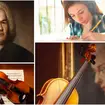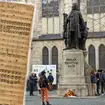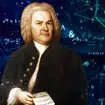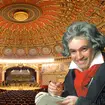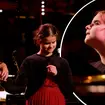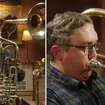Bach - Cantata No. 147
This cantata contains so much more than 'Jesu, joy of man's desiring' - but it's a great way in to this religious piece from 1723.
Bach was a busy composer in his post at the Thomaskirche in Leipzig, often recycling the best parts of earlier works and recomposing them into a piece for a religious feat. The Cantata No. 147, Herz und Mund und Tat und Leben, is no exception: Bach, in his quest to supply music for umpteen venues throughout his life, recycled music he wrote in 1716 – adding the now favourite 'Jesu, joy of man's desiring' section only the second time around. Originally destined for the last Sunday of advent, the reworked version became a setting for May’s Feast of the Visitation.
If we translate the title of the most popular section of Bach’s cantata a little more accurately than the now ubiquitous English version we know, it comes out something like 'Jesus remains my joy, my heart’s comfort and essence', rather than 'Jesu, joy of man’s desiring'. Indeed, the rest of the translation bears precious little relation to the actual German text, written by the lawyer and poet Salomo Franck.
Accuracy of words aside, this exquisite 10th movement – choral interludes between that divine, undulating melody – might be best seen as a mere key to unlocking the rest of the cantata, entitled Herz und Mund und Tat und Leben (which translates as ‘heart and mouth and deed and life’). The piece is scored for SATB choir, trumpet, 2 oboes, bassoon, strings and continuo, with soprano, alto, tenor and bass solos. Usually, Bach uses trumpets and timpani in collaboration, but the timpani are conspicuous by their absence. Instead, the trumpet comes to the fore and Bach makes the most of its solo capabilities. Listen to the opening chorus for a burst of brassy splendour.



